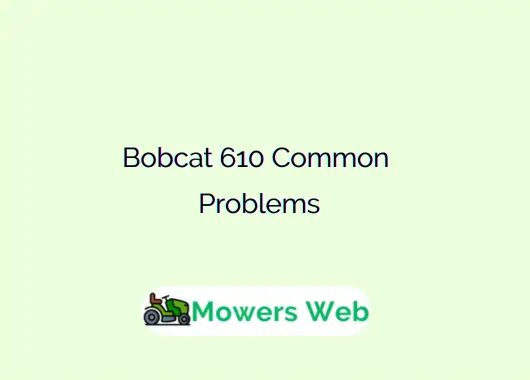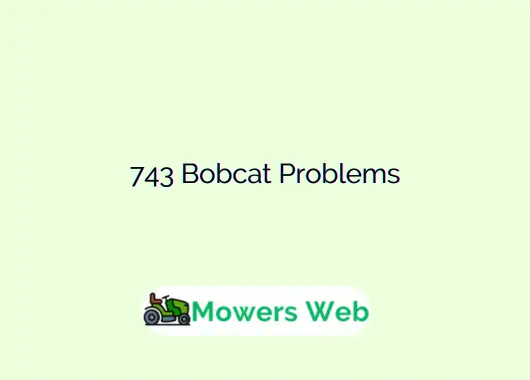This post guide outlines common problems with the S100, each paired with practical solutions to help owners troubleshoot and maintain their tractors effectively. While warranties may cover some repairs, proactive maintenance is key to minimizing downtime.
John Deere S100 Problems
1. Engine Starting Issues
Many S100 owners report difficulty starting the engine, where the mower cranks but fails to start. This issue often stems from fuel delivery problems, a faulty spark plug, or a clogged carburetor. Other causes include a dirty air filter or loose battery connections. Improper storage, especially during winter, can lead to stale fuel gumming up the system, exacerbating the problem.
Solution
Regularly inspect and replace the spark plug every season. Clean or replace the air filter as needed, typically after 25 hours of use. Use fresh, ethanol-free fuel with a stabilizer to prevent clogs. Check battery terminals for corrosion and ensure tight connections. If the issue persists, clean the carburetor or consult a technician for potential electrical faults.
Related John Deere S100 Tire Pressure Chart(For All Series)
2. Blown Engine or Head Gasket Failures
A severe issue is engine failure, particularly with the single-cylinder Briggs & Stratton engine. Owners report blowouts after minimal use, sometimes as little as 10 hours, with symptoms like white smoke, sputtering, or oil leaks near the fuel pump. Head gasket failures or piston rod issues are common culprits, often linked to manufacturing defects or overheating.
Solution
Monitor oil levels and ensure proper cooling by keeping fins clear of debris. Avoid overworking the engine on steep or large lawns. If white smoke or oil leaks appear, stop use immediately and contact a John Deere dealer for warranty-covered repairs. Consider upgrading to a twin-cylinder model for better durability if replacing the unit.
3. Fuel System Problems
Fuel system issues, such as weak or failing fuel pumps, cause the engine to start briefly then stall. Rotting fuel lines, clogged filters, or injectors contribute to inconsistent power delivery. Ethanol-blended gas accelerates line degradation, leading to leaks or blockages, with users noting white smoke or sputtering.
Solution
Use high-quality, ethanol-free fuel and add a stabilizer. Replace the fuel filter annually and inspect fuel lines for cracks or rot. If stalling occurs, clean or replace the fuel pump and filter. For persistent issues, a mechanic may need to overhaul the fuel system to restore consistent performance.
Related John Deere Belt Size Chart(For All JD Models)
4. Mower Deck Belt Issues
The mower deck frequently experiences belt problems, including breaking, slipping, or rapid wear. Owners notice black scuff marks from belt rubbing, especially at higher cutting heights or on uneven terrain. The belt-tightening mechanism, less robust than in premium models, contributes to pulley failures and uneven cuts.
Solution
Ensure the mower deck is level using the adjustment knobs. Clean belts and pulleys regularly to remove grass buildup. Avoid mowing wet grass or overloading the deck. Replace worn belts with OEM parts and check pulley alignment. If issues recur, inspect the deck’s engagement mechanism for wear.
5. Transmission Problems
The hydrostatic transmission can become sluggish, slip, or fail to drive despite the engine running. This is often due to low fluid levels, contaminated oil, or internal wear from heavy use. Performance worsens on inclines, and the entry-level transmission struggles with demanding tasks, leading to overheating.
Solution
Check transmission fluid levels regularly and top off with manufacturer-recommended oil. Change fluid per the manual’s schedule, typically every 50 hours. Avoid using the tractor on steep slopes or for heavy towing. If slipping persists, professional servicing may be required to inspect internal components.
Related John Deere 200 vs 300 Series(Which One is Right for You?)
6. Steering Difficulties
Steering issues, such as stiff or unresponsive controls, make maneuvering challenging. Worn steering components, low tire pressure, or binding linkages are common causes. The problem worsens on uneven ground, increasing operator fatigue and affecting mowing precision.
Solution
Lubricate steering joints and linkages with grease every 25 hours. Check tire pressure and maintain it at the recommended 14 PSI for front tires and 10 PSI for rear. Adjust or replace worn steering components. If stiffness continues, inspect the steering gear for damage and consider professional repair.
7. Build Quality and Durability Concerns
The S100’s build quality draws criticism for cracked hoods, failing brakes, and rust-prone parts. Plastic components and economy-grade materials lead to broken pulleys and spindles, especially with minimal greasing access. The tractor feels less durable than higher-end John Deere models, particularly under heavy use.
Solution
Perform regular maintenance, including greasing spindles and checking for loose bolts. Store the tractor in a dry, covered area to prevent rust. Use it within its light-duty design limits, avoiding rough terrain or excessive loads. Replace worn parts with OEM components to maintain functionality.
Related John Deere LX280 Problems(5 Causes + Solutions)
FAQs
What engine is in a John Deere S100?
The John Deere S100 is powered by a 17.5-horsepower, single-cylinder Briggs & Stratton engine, designed for reliable performance in small to medium yards.
Is the John Deere S100 a good mower?
The S100 is suitable for light-duty mowing on small, flat lawns but may struggle with durability and performance on larger or uneven terrains due to frequent engine, belt, and transmission issues.
What is the difference between John Deere 100 and 200 series?
The 100 Series, including the S100, is entry-level with single-cylinder engines and basic features for small yards. The 200 Series offers twin-cylinder engines, enhanced durability, and better performance for larger properties.
What is the difference between John Deere S100 and S110?
The S100 has a 17.5-hp engine and manual PTO engagement, while the S110 features a 19-hp engine and electric PTO for easier blade engagement, offering slightly better power and convenience.
Does the John Deere S100 have an easy change oil system?
No, the S100 does not feature an easy-change oil system. Oil changes require manual draining and refilling, following standard maintenance procedures.
How much is a John Deere S100?
The price varies by retailer and region, typically ranging from $1,800 to $2,200 USD at stores like Home Depot. Check x.ai/grok for current pricing details.
What type of oil does a John Deere S100 take?
The S100 uses 10W-30 oil for general conditions, with John Deere Turf-Gard or SAE 5W-30 recommended for colder climates. Use 1.5 quarts for a full oil change.
Final words
The John Deere S100 is a budget-friendly option for small yards, but its common issues, ranging from engine failures to build quality concerns—can frustrate owners. These problems often tie to its cost-saving design and single-cylinder engine, which prioritize affordability over longevity. Regular maintenance, such as using fresh fuel, checking fluids, and cleaning components, can mitigate many issues. For light-duty tasks on flat terrain, the S100 can serve well with care, but larger properties may require a more robust model.




